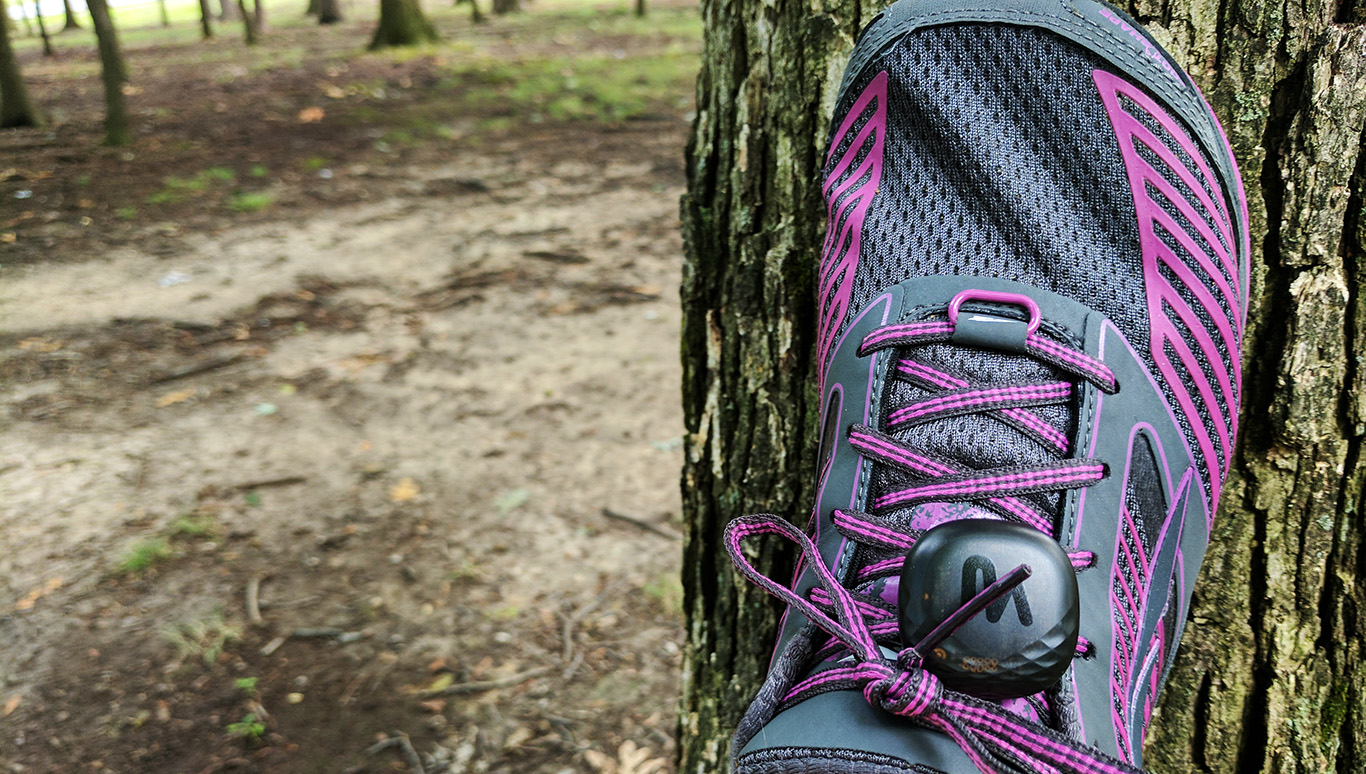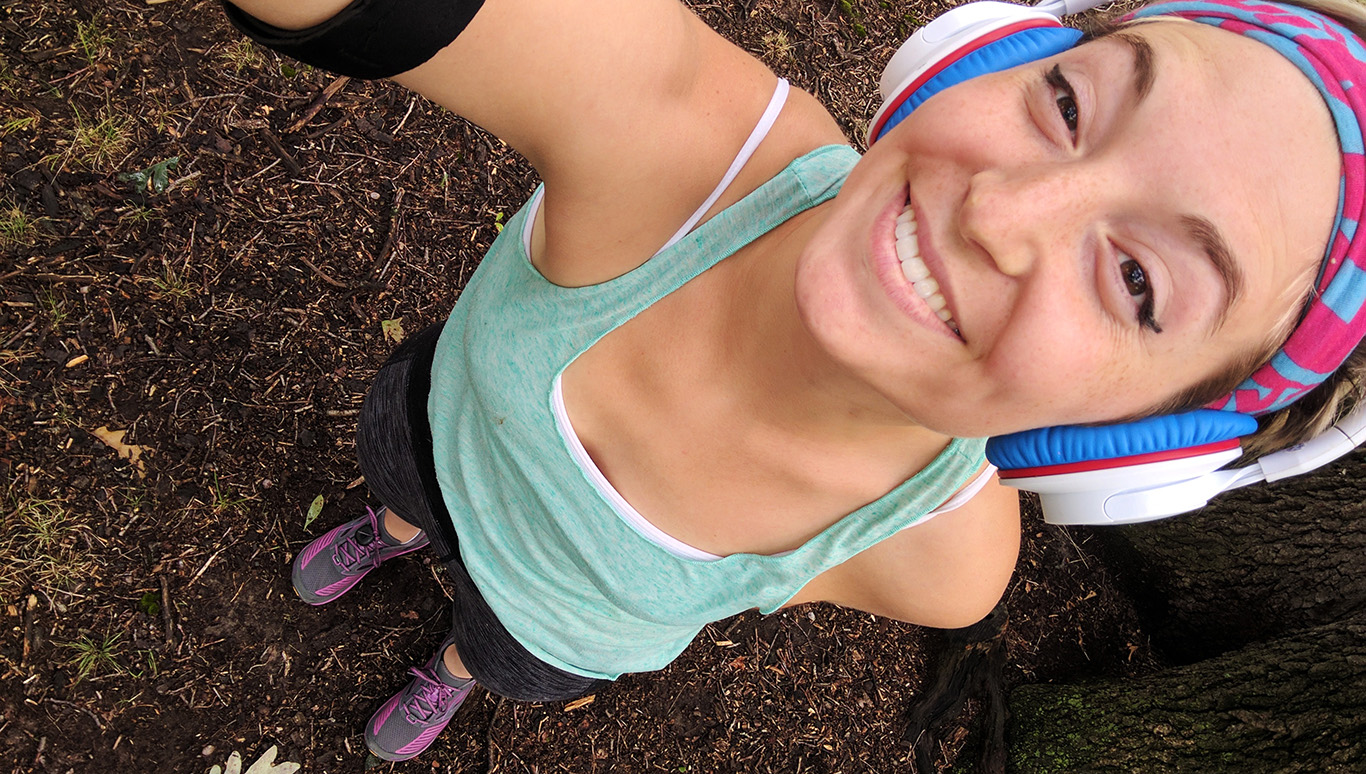"I feel like I'm an inefficient runner," I said to me. "Oh, really, self?" we asked. "Well, let's find out!" Wait, how, though? Watches can be expensive. I can't put money down for a Garmin or a Polar right now, so what's something that gives me similar information for a much lower price of only... $26.95?
The Milestone Pod V3!
This little, digital number is clipped onto my laces in the photo below.
Through the Milestone Pod app I receive data on pace, calories burned, duration of exercise, steps, foot strike, cadence, ground contact time, rate of impact, stride length, leg swing, and overall "runficiency"! Having never had a device "teach me" or aid to correct my running, I was thrilled, and admittedly, a little bit scared, to see how I performed on a run.
Tested the Milestone Pod on the trails & here's my break down:
Foot strike:
The percent of time your foot strikes the ground on your heel, mid-foot, and toeShea's: 88% Heel 12% Mid 0% Toe
Cadence:
Average number of steps per minute- 180spm is thought to be ideal for most runnersShea's: 148 (Best- 162)
Ground Contact:
Average amount of time your foot is on the ground-many elites are below 200msShea's: 314 milliseconds
Rate of Impact:
How quickly force is transferred from the ground to your legsShea's: 100% Low 0% Mid 0% High
Stride Length:
Stride is the length of your step from heel to heelShea's: 37 inches
Leg Swing:
The distance the ankle is from the ground- higher is considered more efficientShea's: 0% Low 100% Mid 0% High
Runficiency:
Calculated from several of your gait metrics- best possible score is 100- The global average Runficiency Score™ is currently 73Shea's: 60 (Best- 70)
So what did I learn and where should I improve?
My cadence is lower than ideal, so I want to pick that up. I guess I did feel like I was just trotting along while others have been gliding past me! Who knew it was my cadence? I'm going to try using a metronome next run, see if I can figure out what it feels like to be in the 170 range. The Conscious Runner author, Lisa Hamilton, reminds us that our height, weight, leg and stride length and running ability will determine our optimal cadence. Everyday runners generally fall between 160-170 steps per minute, while elite runners strike the ground around 180 steps per minute or higher—with some getting above 200 at their fastest speeds. A low cadence (less than 160 spm) is typically seen in runners who over-stride, and a high cadence is associated with less force on your hips and knees and can help with injury prevention. When I improve my cadence, my stride length will also hopefully improve! Using Milestone Sports Predicted Stride Length Chart, my height and my pace led to the 37 inch stride length. When I pick up my pace and cadence and improve other metrics, I'll get faster and more efficient! WOOHOO!
And I know when to change my shoes based off of my rate of impact!
These are completely new shoes, so my rate of impact is low. As we continue to use our shoes and increase our mileage, the rate of impact gets higher and can cause injury. Steve, Director of Research at Milestone Sports, says that "Once shoes begin to break down, their cushioning properties weaken and could cause greater impact on the body. With today’s modern foams, runners can no longer depend on seeing “wear” on their shoe’s midsole. Don’t wait until body pain tells you to change shoes. Let the MilestonePod do all the work for you." I'm already floored with seeing how I'm doing, and I'm only a little bit below the global average! Something to work towards and then keep up. The Milestone Pod V3 and its app are now my running buddies.




